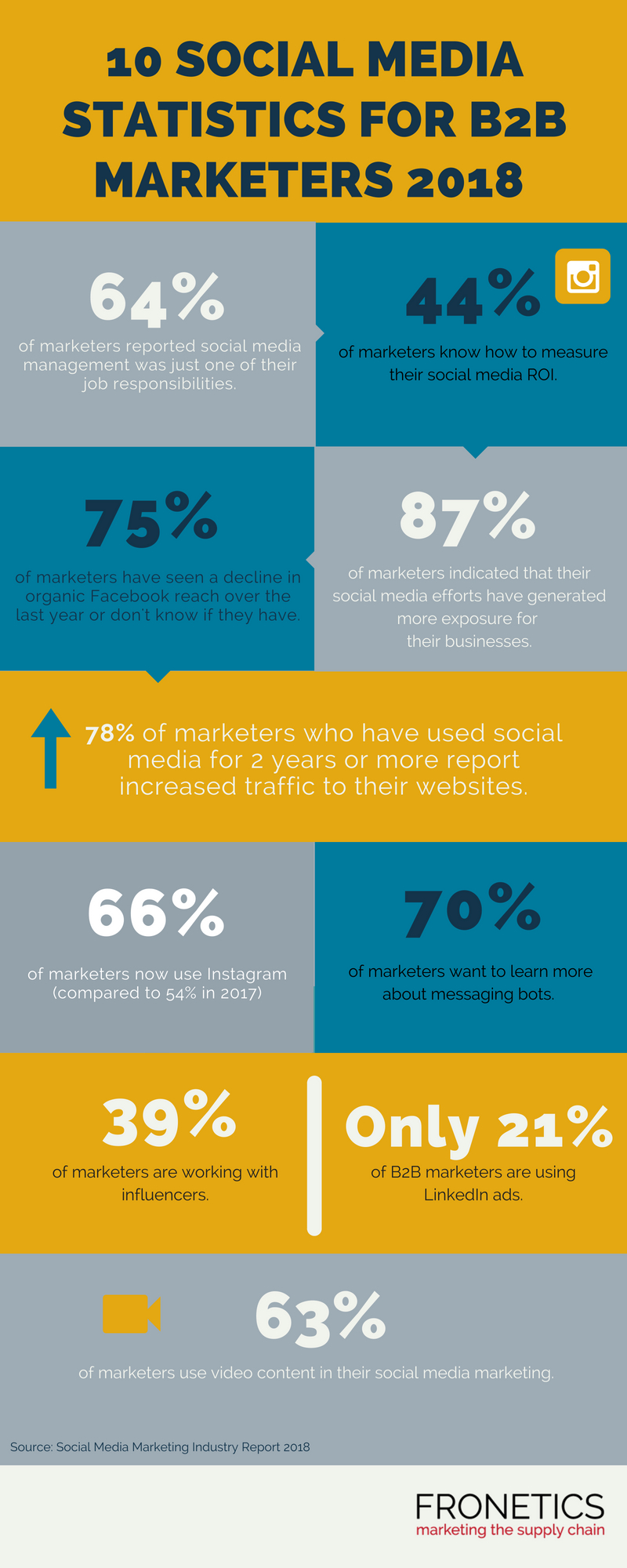There are a lot of ways to measure the success of your marketing campaigns, but one metric that is always important to consider is return on investment (ROI). With social media platforms like Instagram, you can reach a large audience with relatively little investment, so it’s important to understand what your ROI could be.
There are a few different ways to calculate the ROI of Instagram marketing.
One way is to look at the number of new leads or customers you acquired as a result of your campaign. Another way is to look at how much revenue was generated from sales that can be attributed to your Instagram marketing efforts.
No matter how you calculate it, the important thing is to track your progress and compare it against other marketing channels you’re using.
This will help you understand which platforms are providing the best ROI for your business and where you should invest more of your resources.
Instagram marketing can be a great way to connect with potential customers and create a connection with your brand. However, it’s important to consider the ROI of your Instagram marketing strategy before investing too much time or money into it. Here are a few things to keep in mind when determining the ROI of Instagram marketing:
1. The number of followers you have is not necessarily indicative of success. It’s more important to focus on engagement, which means likes, comments, and shares. A smaller number of engaged followers is more valuable than a large number of unengaged followers.
2. You don’t need to spend money on ads to be successful on Instagram. In fact, organic growth is often more effective (and cheaper!) in the long run.
3. Don’t forget about other important metrics like reach and impressions when evaluating the success of your Instagram marketing efforts.
4 Ways to Measure Social Media ROI | The Journey
What is a Good Roi for Instagram Ads?
Instagram has quickly become one of the most popular social media platforms with over 1 billion monthly active users. With such a large audience, businesses are increasingly turning to Instagram to promote their products and services. But what is a good return on investment (ROI) for Instagram ads?
There is no simple answer to this question as it will vary depending on your business goals and objectives. However, there are some general guidelines you can follow to help ensure your Instagram ads are successful.
First, it’s important to create ad campaigns that are relevant to your target audience.
Make sure your ads are visually appealing and include an enticing call-to-action. Also, be sure to track your results so you can gauge whether or not your ad campaigns are achieving your desired ROI.
Overall, a good ROI for Instagram ads will depend on a number of factors unique to your business.
By following best practices and tracking your results, you can maximize the chances of success for your next Instagram ad campaign.
What is the Roi of Social Media Marketing?
There is no clear answer when it comes to the ROI of social media marketing. It depends on a number of factors, including the size and industry of your business, your goals, and how you measure success.
That said, there are some general things to keep in mind when trying to calculate the ROI of social media marketing.
First, it’s important to remember that social media is not a direct sales channel. It’s more about building relationships and creating brand awareness. So don’t expect immediate sales from your social media efforts.
Second, consider all the different ways you can measure success with social media marketing. For example, you can track website traffic, leads generated, or even brand mentions. Figure out which metrics are most important to your business goals and focus on those.
Finally, don’t forget to factor in the time and resources required for social media marketing. If you’re not careful, it can easily become a time-sink with little return on investment.
What is a Good Roi for Influencer Marketing?
There is no one answer to this question as the return on investment (ROI) for influencer marketing will vary depending on a number of factors, including the size and engagement of the influencer’s audience, the quality of their content, how well they align with your brand, and more. However, if you are able to work with an influencer who has a large and engaged following, produces high-quality content, and is a good fit for your brand, you can expect to see a good ROI from your investment.
What is Average Roi on Marketing?
The average ROI on marketing can vary greatly depending on the industry, type of marketing, and other factors. However, in general, businesses should expect to see a return of 3-5x on their marketing investment. For example, if a company spends $1,000 on marketing, they should expect to see a return of $3,000-$5,000.
Of course, this is just an average and some companies may see a higher or lower return.
There are many different ways to measure ROI for marketing campaigns. One common method is to track the number of leads or sales that can be directly attributed to the campaign.
Another way is to look at the overall increase in web traffic or brand awareness that results from the campaign. Ultimately, the best way to measure ROI will vary depending on the specific goals of each campaign.
While ROI can be a helpful metric for evaluating marketing success, it’s important to keep in mind that it’s not always possible to directly attribute sales or leads to specific campaigns.
In many cases, multiple factors (including timing) can contribute to an uptick in business. As such, it’s important not to get too caught up in short-term ROI when making decisions about long-term marketing strategy.

Credit: www.fronetics.com
Instagram Roi Calculator
Instagram is one of the most popular social media platforms with over 1 billion monthly active users. And, it’s not just for personal use anymore – businesses are using Instagram to reach new audiences and drive ROI.
But how do you calculate ROI for your Instagram campaigns?
There are a few different methods, but we recommend using an Instagram ROI calculator.
An Instagram ROI calculator is a tool that helps you determine the return on investment (ROI) for your Instagram marketing campaigns. By inputting key data points, like ad spend and impressions, you can see how much revenue your campaigns are generating.
There are a few different Instagram ROI calculators available online, but we recommend using the one from Sprout Social. It’s free to use and provides detailed insights into your campaign performance.
To use the Sprout Social Instagram ROI calculator, simply input your ad spend and estimated impressions for each campaign.
Then, select the “Calculate” button to see your results.
What are the Relevant Metrics for Tracking Roi on Social Media?
In order to track the ROI on social media, there are a few relevant metrics that should be considered. These include:
1. Number of leads generated – This metric looks at how many leads were generated as a result of social media activity.
This can be tracked by looking at the number of people who have visited your website or landing page from a link shared on social media.
2. Cost per lead – This metric looks at how much it costs to generate each lead through social media activity. This can be calculated by dividing the total cost of your social media campaigns by the number of leads generated.
3. Conversion rate – This metric looks at how many of the leads generated through social media activity actually convert into customers or clients. This can be tracked by looking at the number of people who make a purchase or sign up for a service after clicking on a link shared on social media.
4. Revenue generated – This metric looks at how much revenue is generated as a result of social media activity.
This can be tracked by looking at the amount of sales made or money earned from new customers or clients that were acquired through social media links.
5. Engagement rate – This metric looks at how engaged users are with your brand on social media platforms.
Instagram Marketing Strategy
It’s no secret that Instagram is one of the most popular social media platforms out there. With over 1 billion monthly active users, it’s a great platform for businesses to reach their target audience. But with such a large user base, it can be difficult to stand out from the crowd.
That’s why it’s important to have a solid Instagram marketing strategy in place.
Here are some tips for building an effective Instagram marketing strategy:
1. Define your goals.
What do you want to achieve with your Instagram marketing? Do you want to increase brand awareness, drive traffic to your website, or boost sales? Once you know what your goals are, you can create content and campaigns that will help you achieve them.
2. Know your audience. It’s important to understand who your target audience is and what they’re interested in. This will help you create content that resonates with them and encourages them to take action.
3. Use engaging visuals. Since Instagram is a visual platform, it’s important to use high-quality images and videos in your posts. This will capture attention and make people want to learn more about your business or product.
4.] Take advantage of hashtags . Hashtags are a great way to get discovered by new users on Instagram . Use relevant hashtags in your posts so that people who are searching for those topics can find your content .
Just don’t go overboard – using too many hashtags can make you look spammy . Try using around 5-10 hashtags per post .
5.] Use calls-to-action . A call-to-action (CTA) tells people what you want them to do , such as buy a product , visit your website , or sign up for a newsletter . Include CTAs in both your bio and posts so that people know how they can take action after seeing your content .
6.] Partner with influencers . Influencer marketing involves partnering with social media users who have a large following in order to promote your product or service .
Social Media Roi Examples
The social media ROI examples below show how various businesses have benefited from investing in social media. As you can see, there is no one-size-fits-all answer when it comes to social media ROI. The key is to track the right metrics and benchmark them against your business goals.
1. Increased Brand Awareness
One of the most common benefits of investing in social media is increased brand awareness. With more people using social media platforms like Facebook, Twitter, and LinkedIn, you have a greater opportunity to reach your target audience with your marketing messages.
And as your brand awareness grows, so does the likelihood that people will buy from you or recommend your products or services to others.
2. More Traffic to Your Website
Another benefit of investing in social media is that it can help drive more traffic to your website.
By sharing links to your website content on social media platforms, you can increase the number of people who visit your site. This can lead to more sales or leads for your business if done correctly. It’s important to note that simply driving more traffic to your website isn’t enough – you need to make sure that the traffic you’re getting is relevant and targeted so that it converts into customers or clients.
Social Media Roi Statistics
It’s no secret that social media has taken over the world. In fact, there are now 2.77 billion active social media users around the globe. And with so many people using social media, it’s no surprise that businesses are also turning to these platforms to reach their target audiences.
But what is often overlooked is the importance of measuring your social media ROI (return on investment). After all, if you’re going to invest time and resources into social media, you want to make sure it’s actually paying off for your business.
So what exactly is social media ROI?
And how can you measure it? Keep reading to find out.
What is Social Media ROI?
Simply put, social media ROI is the value you get from investing in social media. This can be in the form of leads, sales, or any other metric that’s important to your business. For example, if you spend $100 on a Facebook ad campaign and it generates 10 sales, then your ROI would be 10%.
But calculating yoursocial media ROI isn’t always as simple as that. There are a number of factors that go into it, which we’ll discuss in more detail below.
How to Measure Social Media ROI
There are a few different ways you can measure your social media ROI:
1. Sales: This is perhaps the most straightforward way to measureROI. If you’re running ads or promoting products on social media, then tracking how many sales each platform generates will give you a good idea of which ones are worth investing in.
2. Leads: Not all businesses sell products online though. If yours doesn’t, then tracking leads might be a better metric for youto focus on. For example, if someone fills out a contact form on your website after seeing one of your tweets, that would count as a lead generated from Twitter..
3) Engagement: Another way to measureROIis by looking at engagement metrics such as likes, comments ,and shares . This can be helpful in gauging how well received your content is and whether or not people are actually interacting with it . Plus , high engagement rates often leadto increased brand awareness and even conversions down the road .
4) Website Traffic : Finally , another common metric usedto measureROIsocialmedia website traffic . You can track this using Google Analytics or another similar tool .
Social Media Roi Formula
Are you looking for a social media ROI formula? If so, you’re in luck! In this blog post, we’ll provide a detailed explanation of what ROI is and how you can calculate it for your business.
ROI stands for return on investment. Essentially, it’s a way to measure the profitability of your investments. When it comes to social media, ROI can be calculated by taking into account the time and money you’ve invested in activities like creating and publishing content, interacting with users, and running ads.
Then, you compare that to the results you’ve achieved, such as increased web traffic or sales.
If you want to calculate your social media ROI, there are a few different formulas you can use. The most common is:
(Revenue – Cost) / Cost = ROI percentage
For example, let’s say you spend $100 on Facebook ads and those ads result in $500 in sales. Your ROI would be:
($500 – $100) / $100 = 400%
Another popular formula is:
( leads x conversion rate x average customer value ) – ( ad spend ) = ROI
Using this formula, let’s say you generate 10 leads from your social media efforts at a 10% conversion rate and each lead is worth an average of $500. If you spent $100 on those efforts, your ROI would be:
(10 x 0.1 x 500) – 100 = 400
As you can see, both formulas produce the same result in this case. However, depending on your specific situation one formula may be more accurate than the other. Experiment with both to see which provides the best results for your business.
What are the Two Components for Calculating Social Media Roi?
Are you looking to calculate your social media ROI, but not sure where to start? Here’s a quick guide on the two components you need to consider.
The first component is your investment.
This includes both your time and money spent on social media. For example, if you’re paying someone to manage your social media accounts, that’s part of your investment. Other costs could include advertising spend or any software subscriptions needed to help with your social media efforts.
The second component is your return. This is the value you get back from your social media activities. It could be in the form of leads or sales generated, or even brand awareness and reach.
To calculate this, you’ll need to set some goals and KPIs for your social media campaigns, so that you can track and measure progress against them.
Once you’ve considered both components, you can start calculating your ROI using a simple formula: (return – investment) / investment * 100 = ROI%.
For example, let’s say you spend $500 per month on social media, and it generates $5,000 in new sales each month.
Your ROI would be ((5 000 – 500) / 500) * 100 = 900%.
As you can see, calculating your social media ROI doesn’t have to be complicated. By knowing what factors to consider and using a simple formula, you can easily measure the success of your campaigns and adjust accordingly!
Can You Measure the Roi of Your Social Media Marketing?
If you’re like most business owners, you want to know if your social media marketing is really paying off. After all, time and money are finite resources, so it’s important to invest them wisely. The good news is that yes, you can measure the return on investment (ROI) of your social media marketing.
But before we get into how to do that, let’s first define what ROI is.
ROI is a performance metric used to evaluate the efficiency of an investment or compare the profitability of different investments. In other words, it tells you how much money you’re making (or losing) in relation to how much you’re spending.
To calculate ROI, simply divide your net profit by your total investment cost. For example, if you spend $100 on social media ads and make $200 in sales as a result, your ROI would be 100%.
Now that we know what ROI is and how to calculate it, let’s talk about how to measure the ROI of your social media marketing.
The best way to do this is by tracking key metrics such as reach, engagement, leads generated, and sales conversions. Reach refers to the number of people who see your content; engagement measures how often people interact with your content (e.g., likes, comments); leads generated indicates how many people have signed up for your email list or requested more information about your product or service; and sales conversions tracks how many people have made a purchase from your website or brick-and-mortar store after seeing your content on social media.
There are a number of tools available that can help you track these metrics; two popular ones are Google Analytics and Hootsuite Insights.
Once you’ve started tracking these key indicators of success, take a look at each one individually as well as collectively to get an idea of which aspects of your social media marketing strategy are working well and which could use some improvement. From there, adjust your approach accordingly until you achieve the desired results!
Conclusion
Instagram is one of the most popular social media platforms with over 1 billion monthly active users. With such a large audience, businesses can benefit greatly from marketing on Instagram. However, some businesses are unsure of the return on investment (ROI) of Instagram marketing.
There are a few ways to measure the ROI of Instagram marketing. One way is to track website traffic from Instagram. This can be done by adding UTM parameters to your links and then checking your Google Analytics account to see how much traffic is coming from Instagram.
Another way to measure ROI is through sales conversions. This can be tracked by setting up specific landing pages for your Instagram ads and then using analytics software to see how many people are completing the desired action (e.g., making a purchase).
Overall, the ROI of Instagram marketing depends on your business goals.
If you’re looking to increase brand awareness or drive website traffic, you can definitely achieve those objectives through this platform. If you’re looking to generate sales, it’s important to track conversions so that you can accurately gauge whether or not your efforts are paying off.



